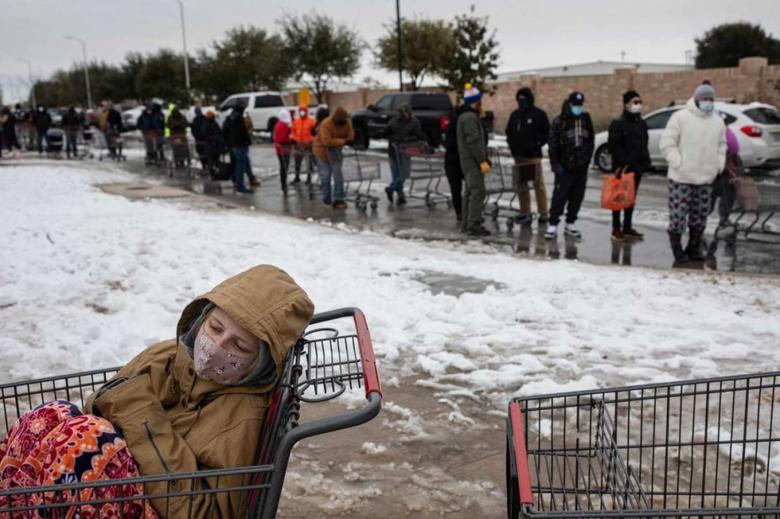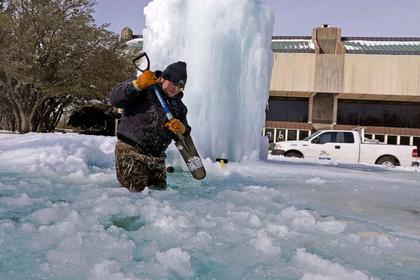
THE TEXAS CLIMATE READINESS

By JANE MARSH Editor Environment.co
ENERGYCENTRAL - Nov 16, 2021 - Texas experienced an unusual weather event last winter. An extreme cold front created a snow and ice storm, decreasing the stability of southeast communities. Ice and wind knocked down power lines and left millions of residents without electricity.
The deep freeze and minimal access to food and heat caused nearly 100 deaths. After the storm, government officials began evaluating future outage prevention techniques. Before exploring the emergency power plan, we must assess the challenges with the current energy supply.
Limitations of the Texas Power Grid
Texas’s freewheeling electricity sector has flaws that were exposed during the deep freeze. The state lacks adequate energy regulations for regional power companies, which have no obligation to create, maintain or distribute electricity.
Though many residents and businesses rely on the power companies for their supplies, the government never established penalties when they failed to deliver. This led to the outage’s extension. Environmentalists evaluated the challenges within the sector and saw the potential for renewables as an emergency power supply.
Renewable Energy in Texas
The conventional Texas power grid relies on fossil fuels for electricity. While the oil and gas industry consumes the Lone Star State, it is also the largest producer of wind power. Nearly 28% of America’s wind energy derives from Texas.
Wind is a suitable option for an emergency power supply. Turbines rely on nondepletable resources, creating the highest amount of electricity during windstorms. The state already contains 500 miles of transmission wires that effectively distribute power. Turbines also reduce localized emissions, increasing Texas’s sustainability.
Solar is another potential energy source for the backup supply with various benefits and can support power demands during outages. Generators can protect residents during storm-related blackouts by powering space heaters, communication devices and medical equipment. Solar also relies on non-flammable resources and produces zero greenhouse gas emissions.
Transitioning toward renewables from the current power supply requires green infrastructural development. Over the past decade, increasing solar power production created nearly a quarter of a million jobs. Texas can increase its resilience during winter storms and generate employment opportunities by developing a clean electric grid.
Creating a Clean Electric Grid
When President Biden took office, he established the Build Back Better policy. His administration allocated $2 trillion to the clean energy sector, supporting emissionless electricity production. Biden plans to expand renewable power, decreasing atmospheric degradation and increasing the grid’s reliability.
Texas can create its own electric grid as an emergency power supply. Renewable energy professionals may develop the system by utilizing supportive technology in the industry. However, one challenge with creating and distributing enough clean energy to meet local demands is storage.
Recently, environmental engineers and scientists developed hydrogen storage technology, increasing the longevity of renewable power. The system connects directly to a solar panel, using the energy to charge a lithium-ion battery. It’s then filtered through an electrolyzer, creating hydrogen and water.
The system collects excess water for reuse and stores hydrogen in a fuel cell. When individuals demand energy, the fuel cell can travel through a direct current converter, producing emissionless electricity.
The Moss Landing energy storage facility in California also provides a model for Texas’s future clean power grid. It was once a power plant and has two large smokestacks. Developers placed massive lithium-ion batteries in the stacks, collecting and storing renewable energy. The facility produces and stores enough clean electricity to support regional consumer demands during peak hours.
Creating a clean electric grid for backup is beneficial during and after storms. Solar is the most affordable energy source on the market. Officials can decrease storm cleanup and utility costs during emergencies when using renewable power.
Installing a Renewable Electric Grid
After evaluating the benefits of a renewable energy grid, utility professionals can start installing the technology. They may begin by accessing support from the government and registering for Build Back Better funding. Once installation workers establish the grid, Texas will be ready for future deep freezes.
-----
This thought leadership article was originally shared with Energy Central's Grid Professionals Community Group. The communities are a place where professionals in the power industry can share, learn and connect in a collaborative environment. Join the Grid Professionals Community today and learn from others who work in the industry.
-----
Earlier:













